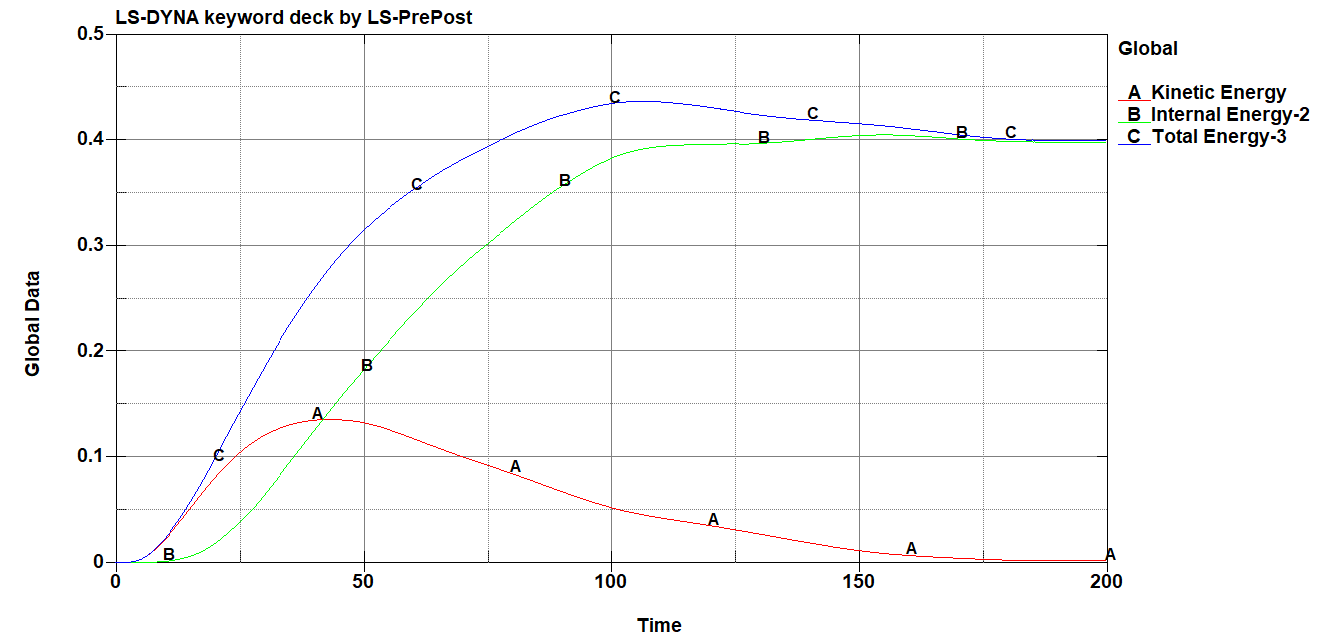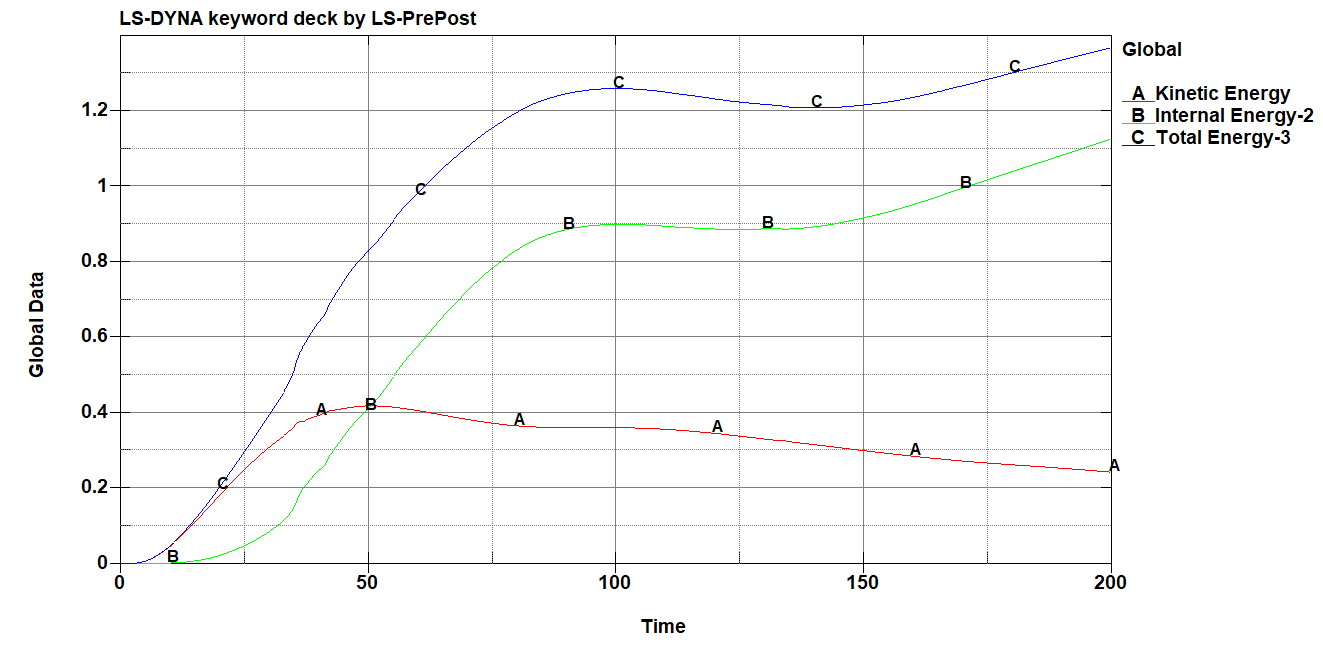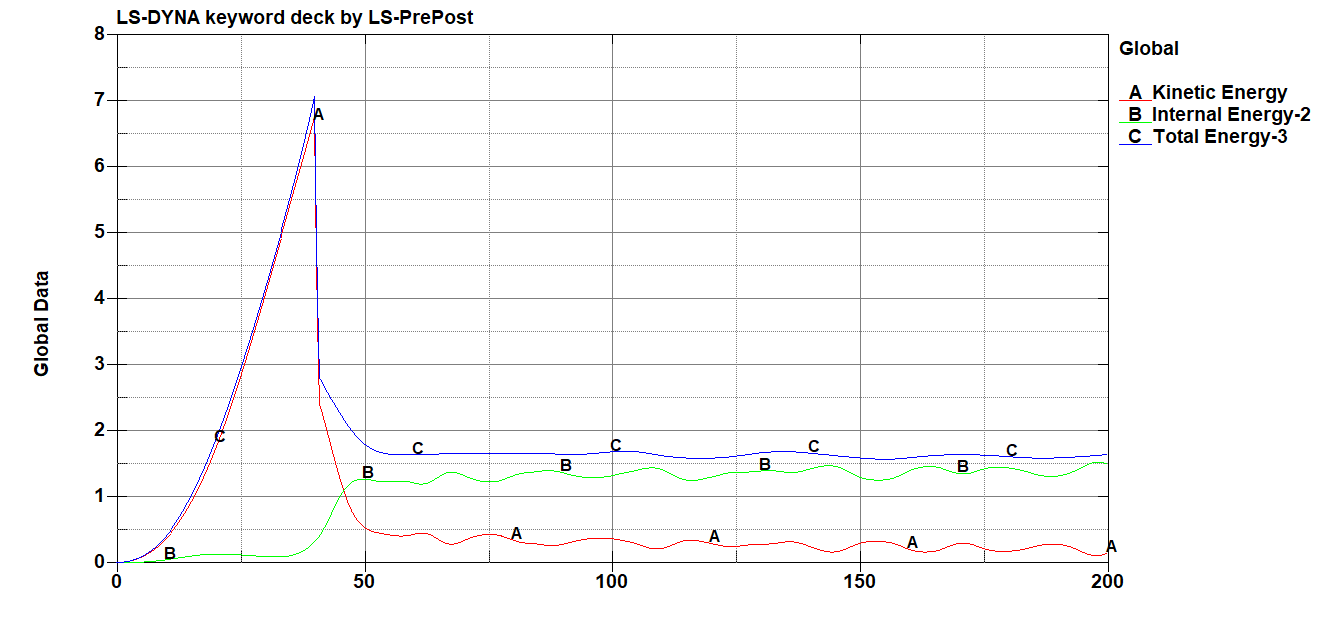TAGGED: compare-results, crash, energy, kinetic-energy, simulation-crash
-
-
November 20, 2025 at 3:31 am
Tiisora
SubscriberHello everyone,
I am new to LS-DYNA. As written in the title, I would like to ask for your help analyzing my energy plots to see whether my simulation is reasonable.
Description:
This is a model where a soft object (A) falls onto a rigid surface (B) from a small height with Gravity.When I run the simulation, I get three cases:
1. Case 1: Object A has been simplified, with many parts removed, no added mass
If I do not add mass, the energy plot looks like this:
The total energy increases together with the kinetic energy. The kinetic energy is converted into internal energy after the impact.
But I don’t understand why the internal energy continues to increase even after the kinetic energy goes to zero.
Is this result reasonable?
Or where might I have made a mistake?
2. Case 2: Added mass using ELEMENT_MASS
When I add mass to nodes using E_mass, these nodes become almost unconstrained after the impact.
The result is:In this case, the kinetic energy still remains.
How can I fix this problem with E_mass?3. Case 3: Add more parts, reduce E_mass, apply BOUNDARY_PRESCRIBED_MOTION_SET
I added more parts back to the model, reduced the amount of E_mass, and applied BOUNDARY_PRESCRIBED_MOTION_SET at the top of object A.
The energy plot becomes like this:The nodes seem to be compressed and oscillate within a small range. The oscillation does not fully decay and looks like a sine wave.
But the energy looks more reasonable: Total energy = kinetic energy + internal energy.Is it reasonable to use this BOUNDARY condition?
Is there a way to reduce the oscillation and bring the model to a steady state?Please help me.
Thank you very much. -
November 24, 2025 at 3:26 pm
Armin
Ansys EmployeeHello,
&list=PLtt6-ZgUFmMLcci-98A4Ifk-VJZZyc0NT&index=5
I have a couple of recommendations:
– Consider watching the following video on energy balance in explicit dynamics analysis, which may address some of your questions:– Instead of modeling the entire drop event, consider moving the deformable body into close proximity to the rigid part, and then use *INITIAL_VELOCITY_GENERATION to give the falling part an initial velocity equal to the speed at which it reaches the rigid body. This way, the energy plots might be easier to interpret, as the kinetic energy will be maximized at time zero and will then convert to other forms, either fully or partially.
-
- You must be logged in to reply to this topic.



-
4377
-
1494
-
1375
-
1203
-
1021

© 2025 Copyright ANSYS, Inc. All rights reserved.










